Has there been a more talked-about topic in the world of work than engagement and retention over the last few years? Fuelled by events like COVID, The Great Resignation and remote work, organizations have been trying to understand what their employees truly need in order to stay content and thrive within their metaphorical walls. And it has been a struggle. A recent Gallup report indicated that as much as 85% of the world’s workforce is currently disengaged. It’s a staggering statistic, but one that companies need to take seriously if they want to attract, hire and retain the best talent.
We recently took a temperature check on this topic with over 500 Talent and HR leaders during our latest SocialTalent Live event. Through a series of polls, we gained key insights into what global organizations are saying about engaging and retaining talent. Let’s take a look…
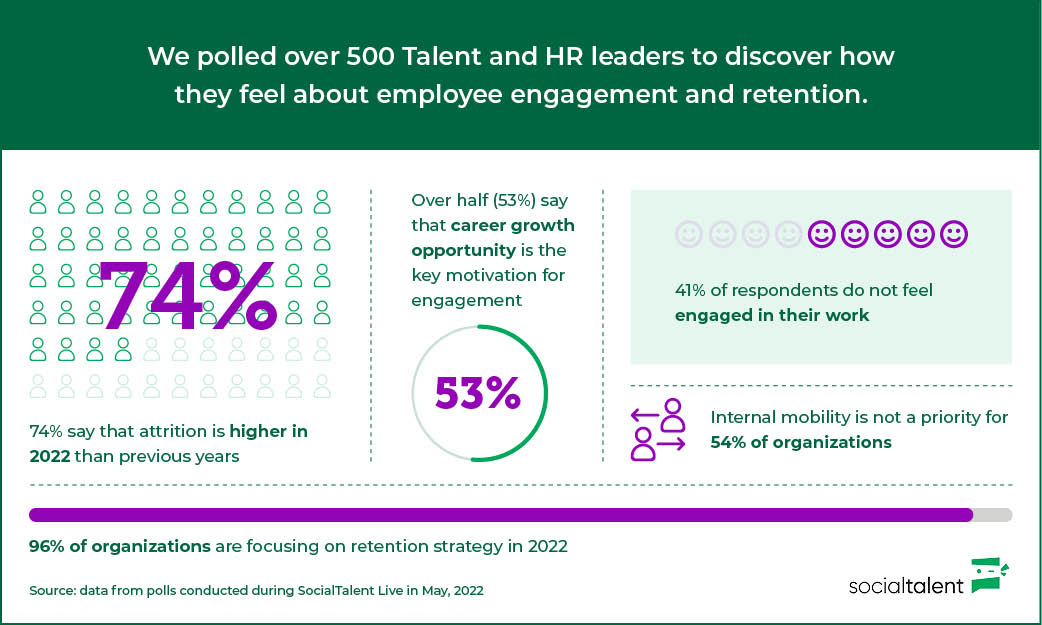
Why is employee engagement so important?
Engaged employees care. They are enthusiastic about their work. However, billions of dollars are wasted every year by organizations who can’t (or don’t) ensure that their workforce is flourishing and enabled for success in every aspect.
Employee engagement is linked to so many benefits, like:
- Increased productivity
- Reduced absenteeism
- Greater profit margins
- Lower employee turnover
- Better job satisfaction
- Improved communication
Engagement and retention are intrinsically linked. And with the candidate market as tight as it is right now, finding ways to fight above the noise and become a destination employer are vital for success. If your talent doesn’t feel valued and is frustrated in their role, the scope to leave and find a better alternative is huge. Remember: according to research, it takes more than a 20% pay increase to lure most employees away from a manager who engages them, and next to nothing to poach disengaged workers.
1.) How engaged are employees right now?
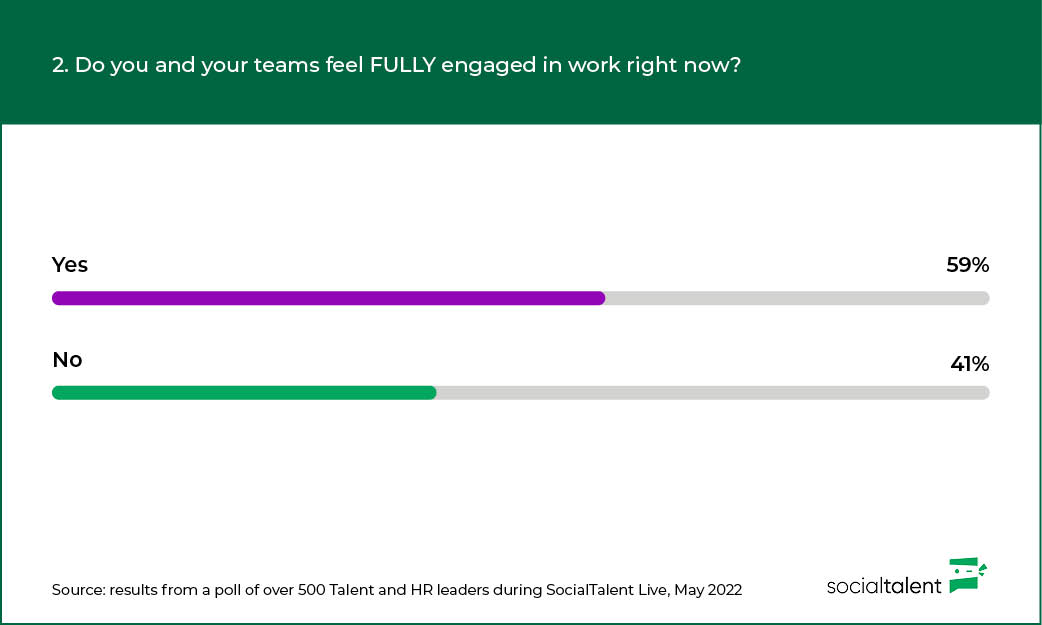
While not as dramatic as the overall Gallup findings, our survey did discover that 41% of respondents do not feel fully engaged in their work right now. That’s a little over 2 in every 5 employees, which is still a sizable amount for any company to have to contend with and does signal the work that needs to be done on this front. But what is causing this discontent? Throughout our webinar, many notions were put forward, but the most prevalent among them were:
- Change in priorities post-COVID
- Poor leadership
- Lack of flexibility and autonomy
The working landscape is so different in 2022. With the mainstream advent of remote and hybrid work, employees are demanding change. And it’s the organizations who are willing to adapt and understand these concerns that will ultimately foster more engagement.
2.) Has employee attrition been higher or lower in 2022?
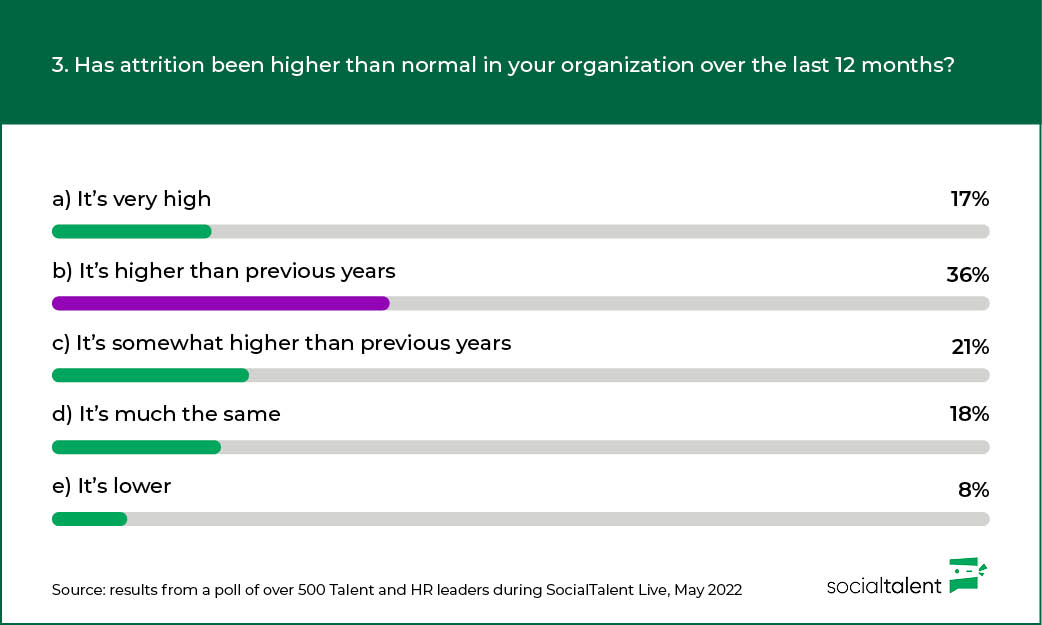
This was a very telling result – as much as 74% of people have seen an increase in attrition over the last 12 months. And only 8% have noted a drop. Employees are leaving organizations in droves right now. Fueled by this lack of engagement, there is increased motivation to seek out a role that is fulfilling and caters to a renewed set of needs. Whether it’s more structures for development and growth, a true work-life balance or empathetic leadership, employees are not afraid to move in order to achieve these outcomes. It’s also interesting to note that in 2021, during another SocialTalent Live event which focused on The Great Resignation, we polled attendees on their attrition figures and 74% also said that it was higher. So it seems that organizations are still battling to fix their leaky buckets of retention.
What is the real cost of attrition in your business?
3.) How can organizations improve employee engagement?
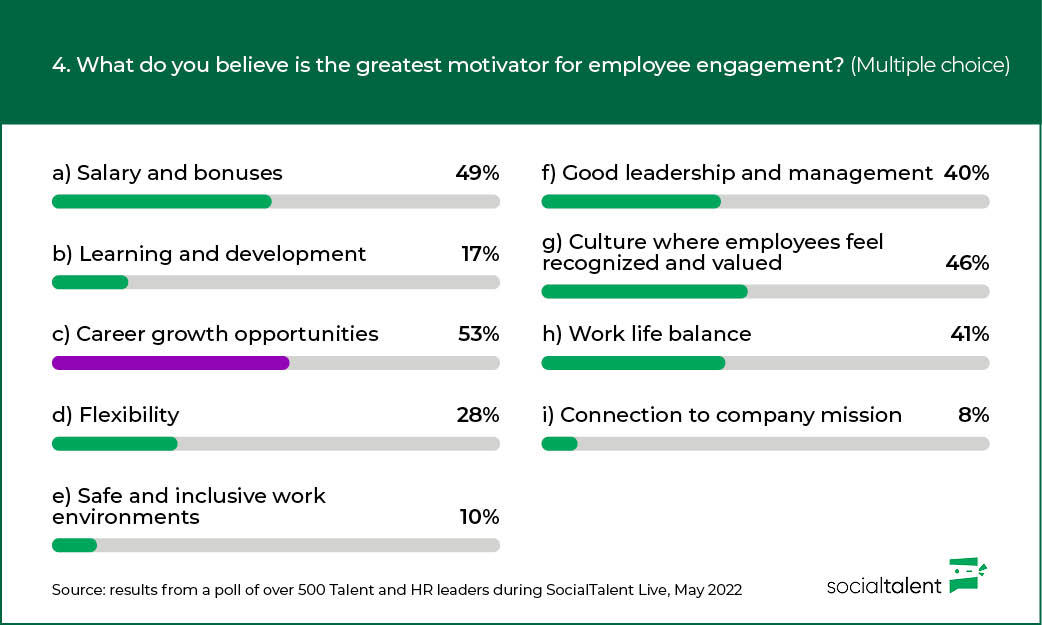
This multiple choice poll asked our audience what they believe to be the most important motivators for building employee engagement. And the results were really varied, perhaps showing how all-encompassing employee engagement is – there is no one single solution. The highest scoring answers were:
- Career growth opportunities (53%)
- Salary and bonuses (49%)
- Employee recognition and value (46%)
- Work life balance (41%)
The immediate takeaway from these statistics seem to point to the overall employee experience. While money will always be a deciding factor in where and how we work, it’s interesting to note that the other components relate more to how the employee operates on a day-to-day basis. They want to be in a company that values them, endeavors to grow their career and doesn’t overlook the importance of life outside the office. Could these be the driving factors behind effective employee engagement?
4.) Do organizations actively promote internal mobility?
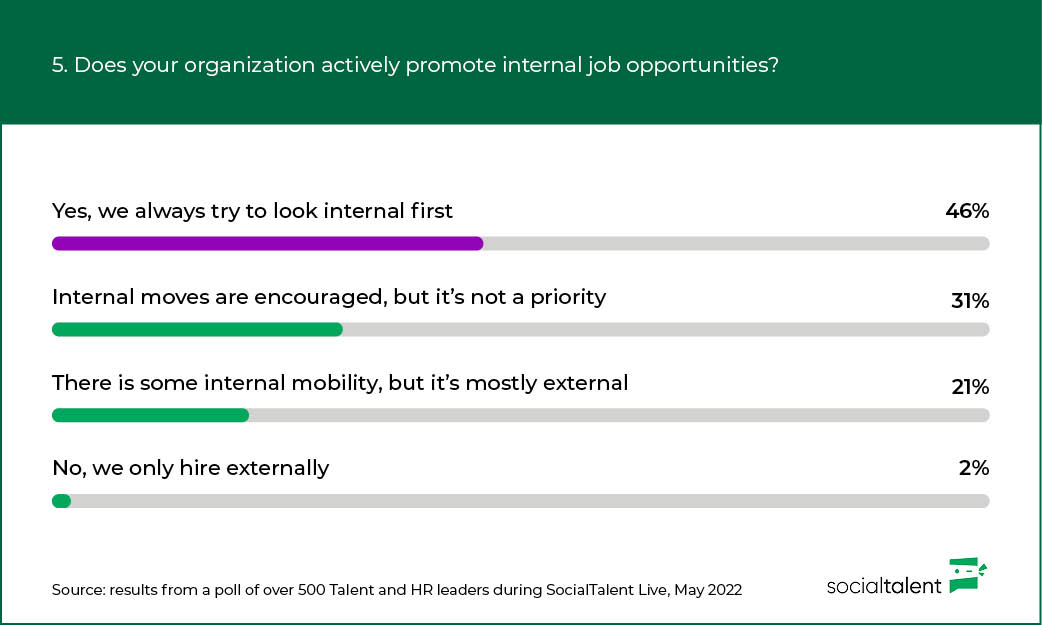
It was quite heartening to see that 46% of respondents actively look at home-grown talent first. We know how important internal mobility is for driving engagement and success – for example, an Oracle article found that organizations that promoted internally are 32% more likely to be satisfied with the quality of their hire. However, it was still the majority (54%) who didn’t list internal mobility as a priority. It’s not a huge discrepancy, but perhaps does hint at how some companies are missing a trick. Glen Goodman, the VP of HR and Chief Talent Officer at ChenMed, mentioned this during his panel at SocialTalent Live. “We are not harnessing the power of internal mobility,” he told us. “It’s so hard to find talent right now that we’re forgetting about what’s in front of us“.
5.) How important are retention strategies for companies in 2022?
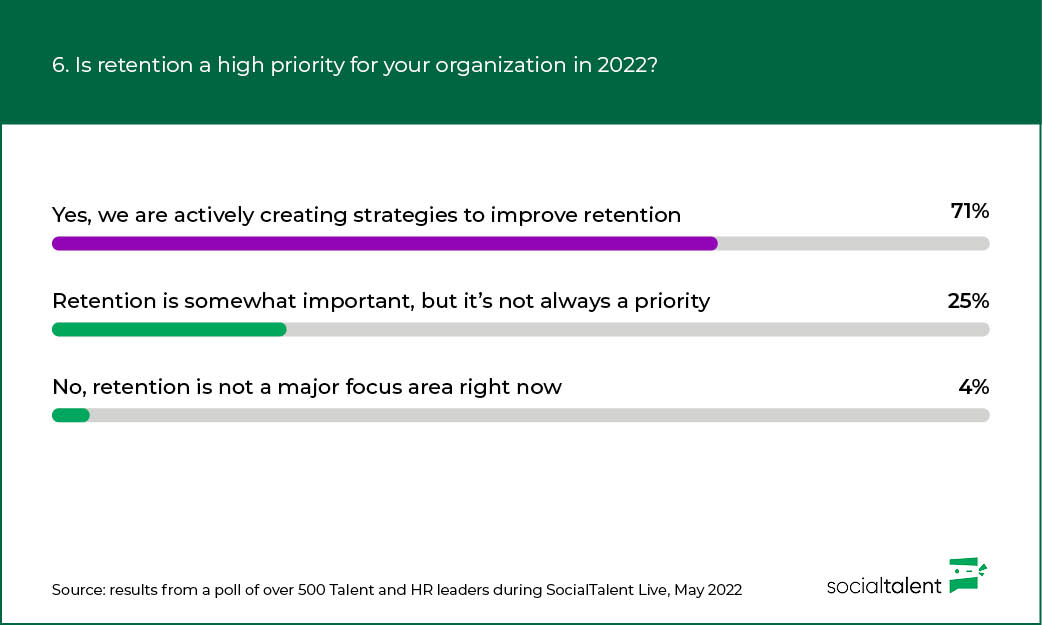
Retention is clearly on the mind for employers in 2022 – a whopping 96% of respondents agree that it’s important, with 71% listing it as a strategic priority. Awareness is absolutely there. Organizations want to stem the tide attrition but seem to be struggling with the ‘how.’ Some companies will throw money at the situation, and while that might work in the interim, it doesn’t get at the root cause – engagement. Employees want opportunities and flexibility and development, they want inclusive cultures that encourage their passion and understand their humanity. So if retention is a peak aim for organizations, perhaps they need to first look at team engagement?
Want to hear what the experts say about engagement and retention? Watch our full recording of SocialTalent Live here.
And don’t forget to sign up for our next event in September on Elevating TA Leadership.
SocialTalent’s e-learning platform can help businesses drive better engagement and retention. Get in-touch with us today to find out more.
The post 5 key employee engagement and retention statistics from 2022 appeared first on SocialTalent.